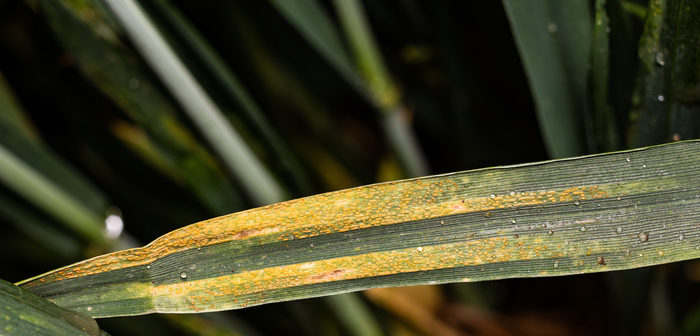Growers are being urged to check wheat crops for yellow rust infections even if they are growing a variety with a high resistance rating, following concerns that a new race of the disease is being seen in the UK.
Jeff Fieldsend, commercial technical manager at FMC, explains that across the country farmers are seeing unprecedented levels of yellow rust, especially in later sown winter wheat crops.
“We think that this level of infection is due to either a mutation of the current yellow rust race or a completely new race of the disease being present in the UK,” says Jeff.
“This means that even crops with a disease resistance rating of eight and nine, such as Skyscraper or Spotlight, are showing signs of the disease.”
Mr Fieldsend explains that if left unchecked the disease could cause serious yield penalties.
“The disease reduces the photosynthetic area of the plant, causing significant yield loss down the line. Growers could see yield losses of as much as 70% on a highly susceptible cultivar if not controlled, but the average yield loss from the disease if left untreated is around 40%,” he says.
He advises growers to get out and check their crops for the disease and if it is present to act with a fungicide application at T0.
“It’s important to treat the disease as early as possible as if it’s left until T1 the infection levels could be significant and require a much higher dose of fungicide to control.
“Growers have two main options for controlling the disease, either a triazole or a strobulurin based product. But I would recommend using a triazole, such as flutriafol, as it’s a fast-acting fungicide and moves quickly through the plant.”
Jeff explains that it’s also worth considering tank mixing this with chlorothalonil to combat any developing Septoria infection in the crop at the same time.
“It’s the last season of use for chlorothalonil, so if you have some in stock it might be worth tank mixing this with a triazole to reduce overall disease pressure,” he says.
“A new race of yellow rust is the last thing that growers need after an unprecedented winter season, but getting on top of this disease now with a fungicide application could be vital to ensuring yields are maximised come harvest,” concludes Mr Fieldsend.




